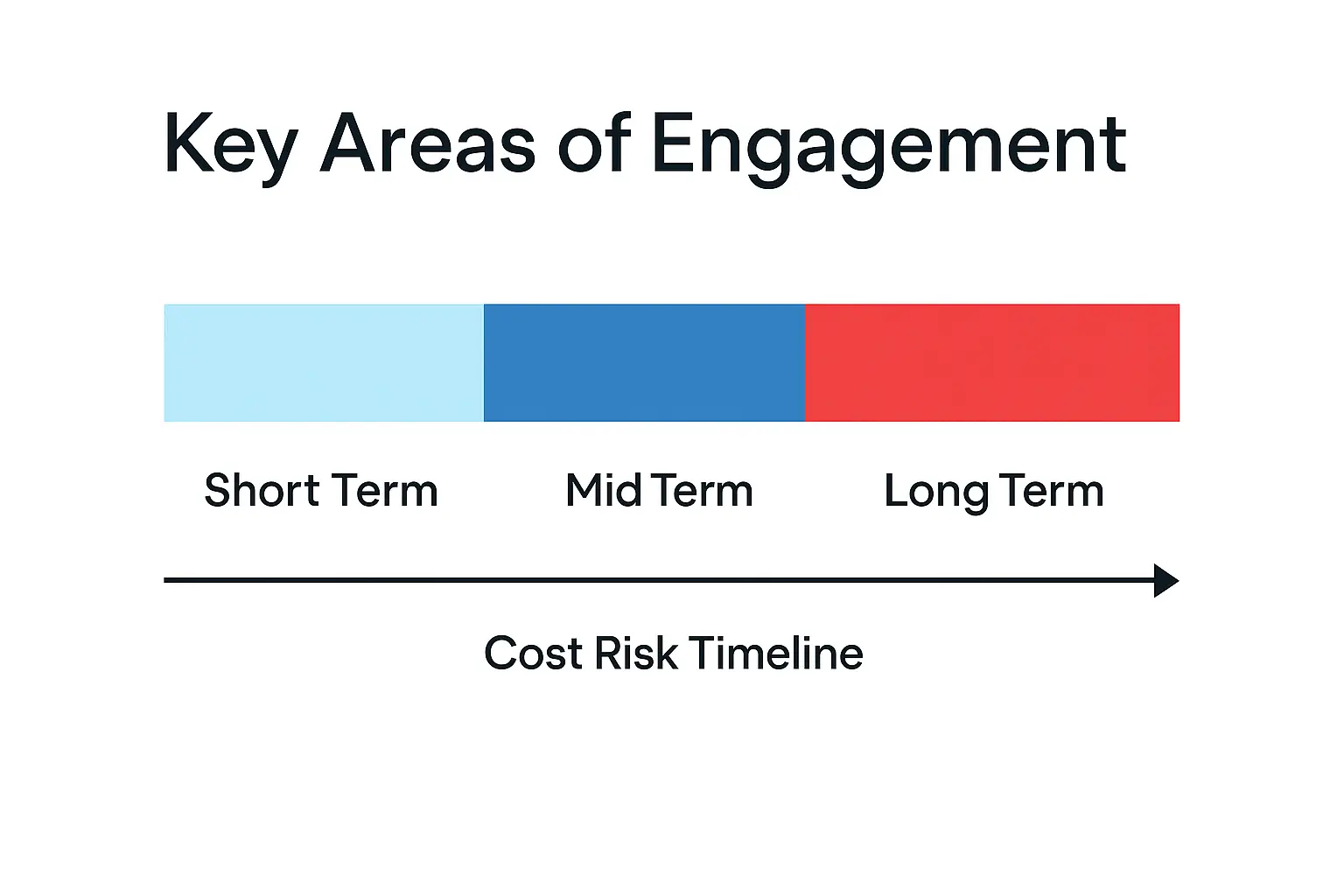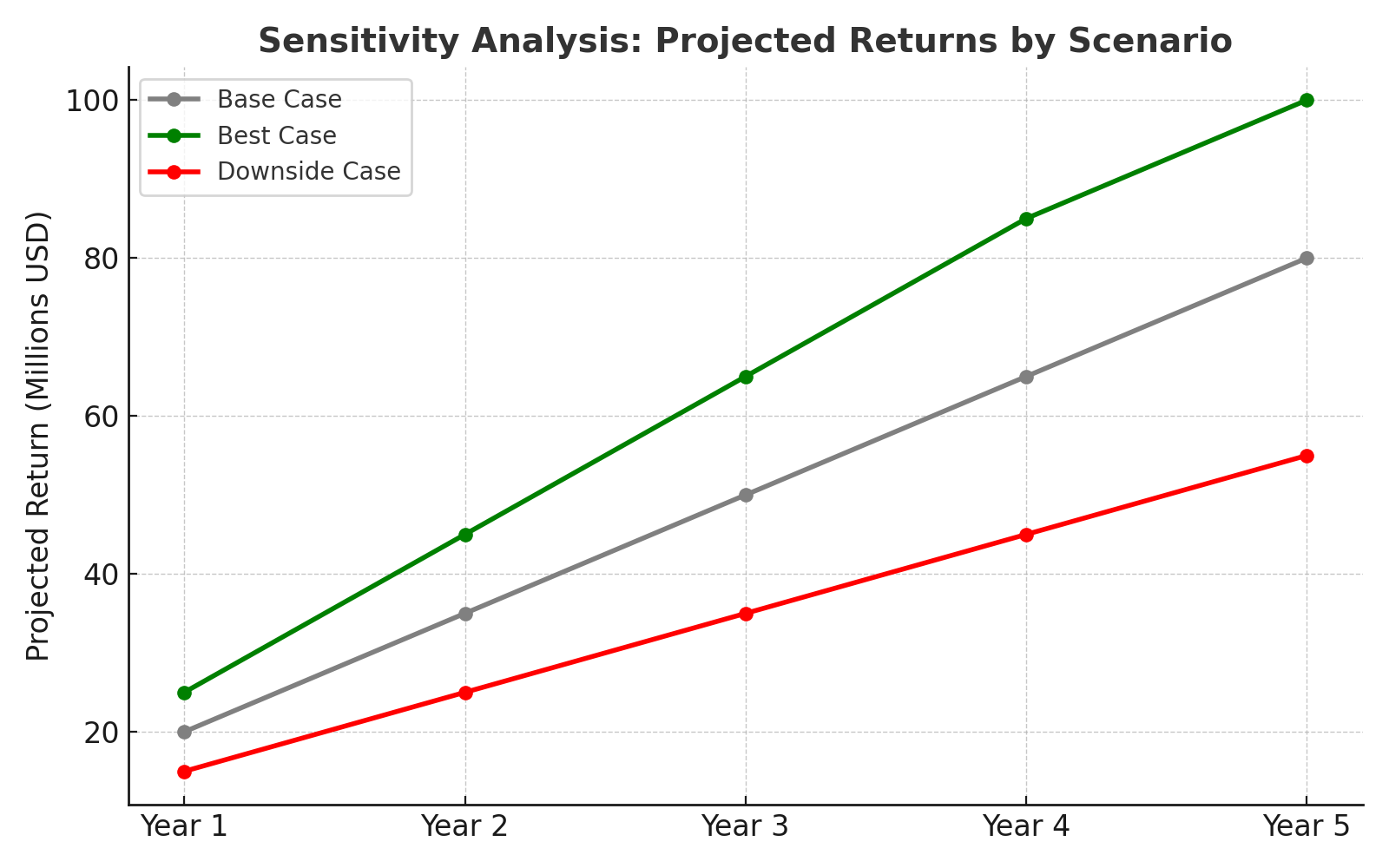Early financial assumptions often set the trajectory of a real estate project, yet too often they are based on optimistic estimates, vendor guidance, or disconnected internal inputs. Without structured validation, teams risk misaligned budgets, inaccurate funding needs, and costly mid-project corrections.
Budget and feasibility support brings clarity to these early decisions. By validating assumptions, testing financial models, and aligning cost structures with capital strategy, organizations reduce uncertainty before capital is committed. This disciplined approach transforms feasibility from a one-time checkpoint into an ongoing decision-making framework.
For developers, investors, and ownership groups, rigorous feasibility is the safeguard that protects projects from financial blind spots and builds the confidence required by lenders, partners, and boards. It is the foundation of disciplined growth and long-term portfolio success.
Benefits:
● Early identification of financial blind spots before scope is locked
● Stronger investor and lender confidence through validated assumptions
● Reduced risk of cost overruns and mid-project adjustments
● Clearer go/no-go decisions backed by structured financial analysis

.png)
Securing capital is one of the most decisive steps in any real estate project. Lenders and investors expect more than optimistic spreadsheets — they require structured plans that connect financial requirements to execution strategies. Budget and feasibility support ensures that funding aligns with reality, not assumptions.
This process clarifies how each layer of capital fits into the project timeline, from equity contributions to debt draws and alternative financing structures. By aligning financing with phasing, organizations reduce the risk of liquidity gaps, delays, or strained investor relationships.
Key focus areas include:
● Capital stack planning that balances equity, debt, and alternative sources
● Lender readiness through underwriting-quality documentation and assumptions
● Investor alignment with transparent reporting and risk mitigation strategies
● Cash flow management that ties draw schedules directly to project milestones
When capital structures are integrated into feasibility planning, projects attract stronger financial partners, move through underwriting more smoothly, and position leadership to execute with confidence.

Accurate cost modeling is the cornerstone of real estate feasibility. Early estimates set expectations for investors, lenders, and leadership, but if they are based on incomplete data or optimistic assumptions, the entire project is exposed to risk. A disciplined modeling process tests assumptions against market realities and provides a financial framework that guides decisions throughout development.
This analysis goes beyond simple pro formas. It incorporates land, design, construction, and operating costs into integrated financial models that reflect both short-term execution and long-term performance. By pressure-testing inputs, leadership gains confidence that each decision is supported by credible data.
Key elements of cost modeling include:
● Hard and soft cost forecasting based on comparable projects and local market conditions
● Revenue projections tied to demand studies, rent trends, or absorption analysis
● Contingency planning that accounts for inflation, permitting delays, and unforeseen costs
● Scenario testing to evaluate best, base, and downside outcomes
With structured cost modeling, feasibility becomes an ongoing decision tool rather than a static report. This empowers organizations to deploy capital with precision and move forward knowing that financial blind spots have been minimized.
.png)
Every development carries risk. The difference between successful and troubled projects is whether those risks are identified and quantified early, or left to surface midstream when they are most costly. Risk management within feasibility ensures that potential exposures are mapped, tested, and addressed before commitments are locked.
Sensitivity analysis brings discipline to this process. By modeling a range of cost, revenue, and timing scenarios, leadership can see how changes in assumptions impact financial performance. This visibility allows decision-makers to set contingencies, refine phasing, or adjust strategy with clarity rather than guesswork.
Key considerations include:
● Market volatility: stress-testing absorption, rents, and pricing under multiple conditions
● Construction risk: evaluating exposure to escalation, labor shortages, and supply chain disruptions
● Regulatory impact: accounting for delays or added costs tied to entitlements and permitting
● Exit flexibility: planning for refinancing, sale, or long-term hold strategies depending on performance
By addressing risks upfront, feasibility shifts from a static financial exercise to an active risk management tool. This protects capital, reassures stakeholders, and creates the confidence to move projects forward with discipline.
Evaluate general contractor or broker-provided estimates for gaps, omissions, or assumptions that could create downstream risk.
View case studyModel early project feasibility using phased scenarios and financial triggers to align development strategy with budget tolerances.
View case studySurface hidden or deferred costs—such as permitting, fees, and escalation—to reduce risk and improve funding accuracy.
View case studyClarify how real estate decisions impact capital planning, operations, and executive expectations.
View case studyStrideArc Budget & Feasibility Support is most valuable when early financial assumptions carry forward unchecked, creating downstream risk in funding, scope, or go/no-go clarity.
● Preliminary estimates rely on broker or GC assumptions without internal validation
● Capital decisions are being made before full cost visibility is established
● Pro forma expectations don’t align with real-world bids or site-specific risks
● Scope changes or phasing decisions introduce cost uncertainty
● Leadership needs a second layer of review before final approval
StrideArc helps project teams pressure-test assumptions, identify blind spots, and align early financial decisions with execution strategy.